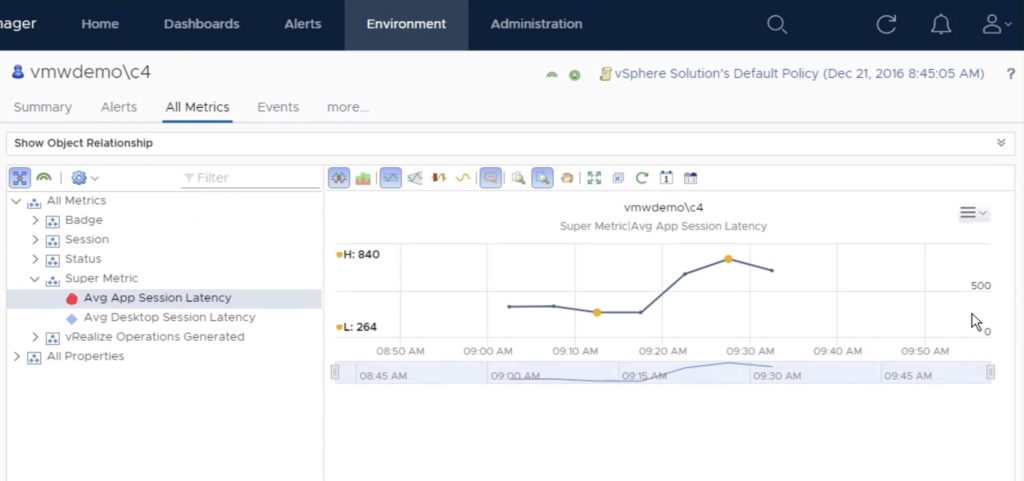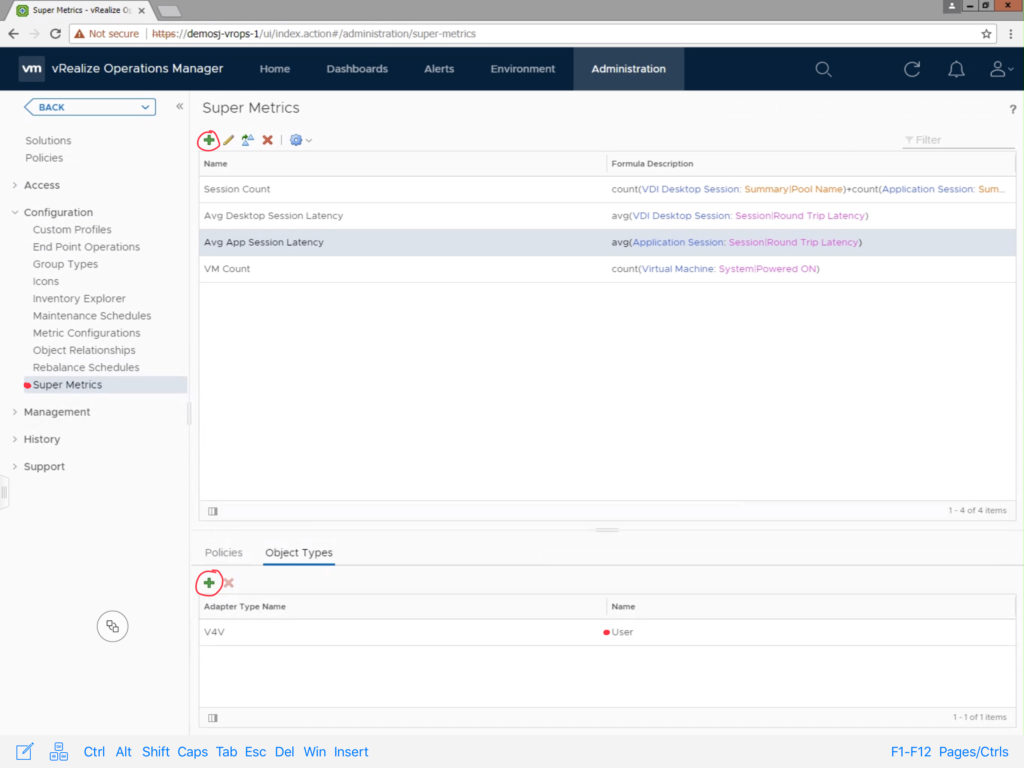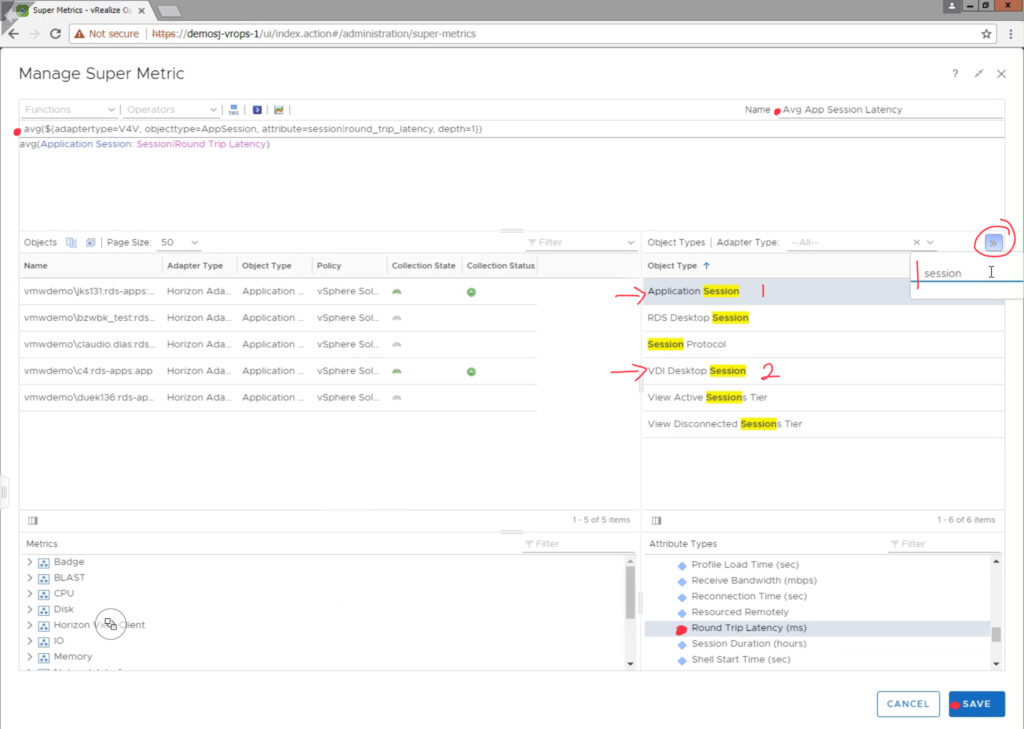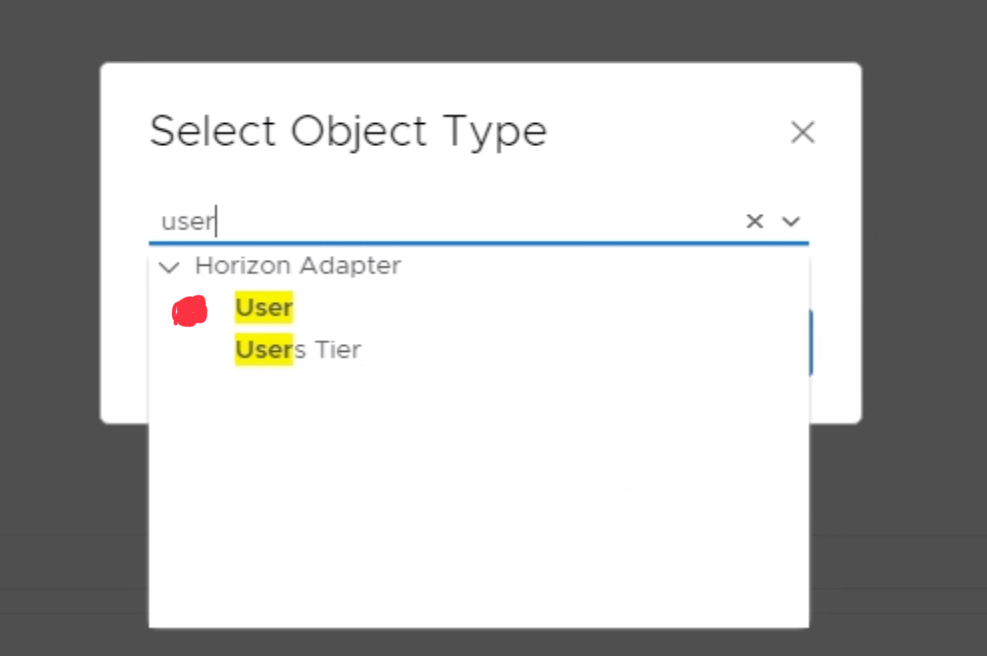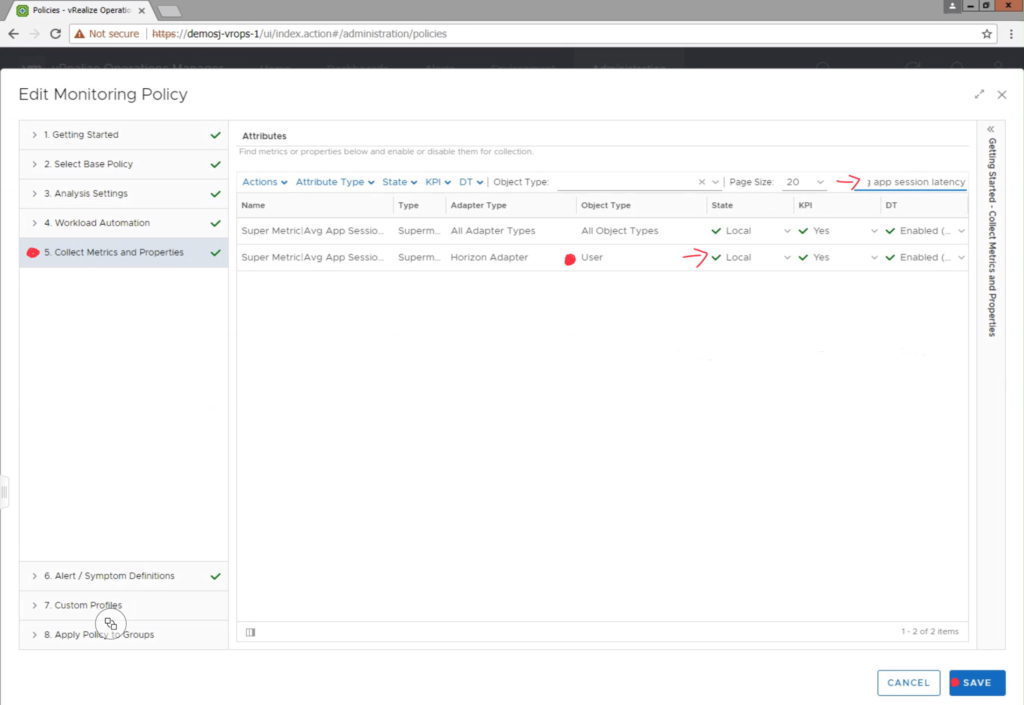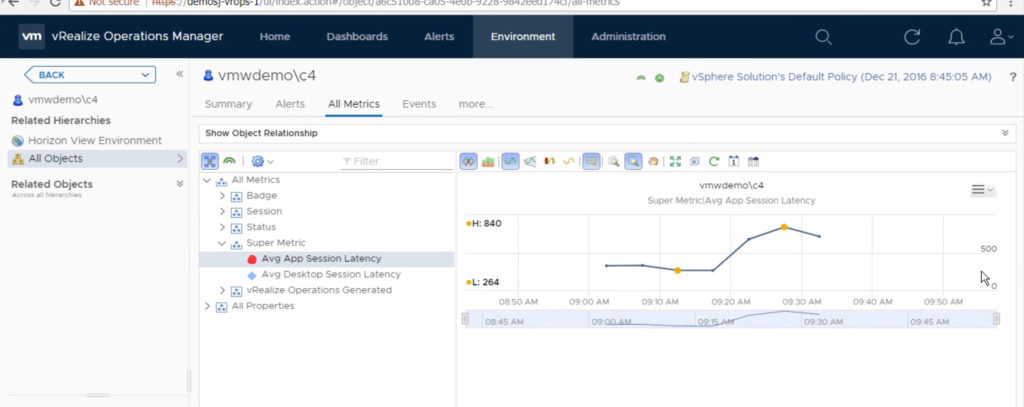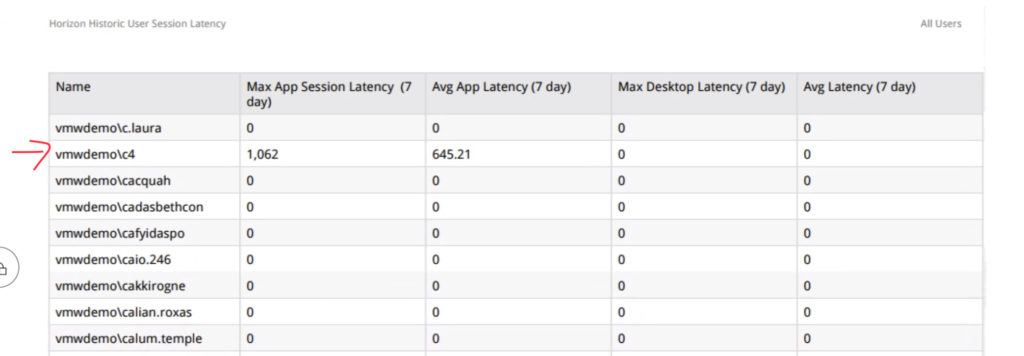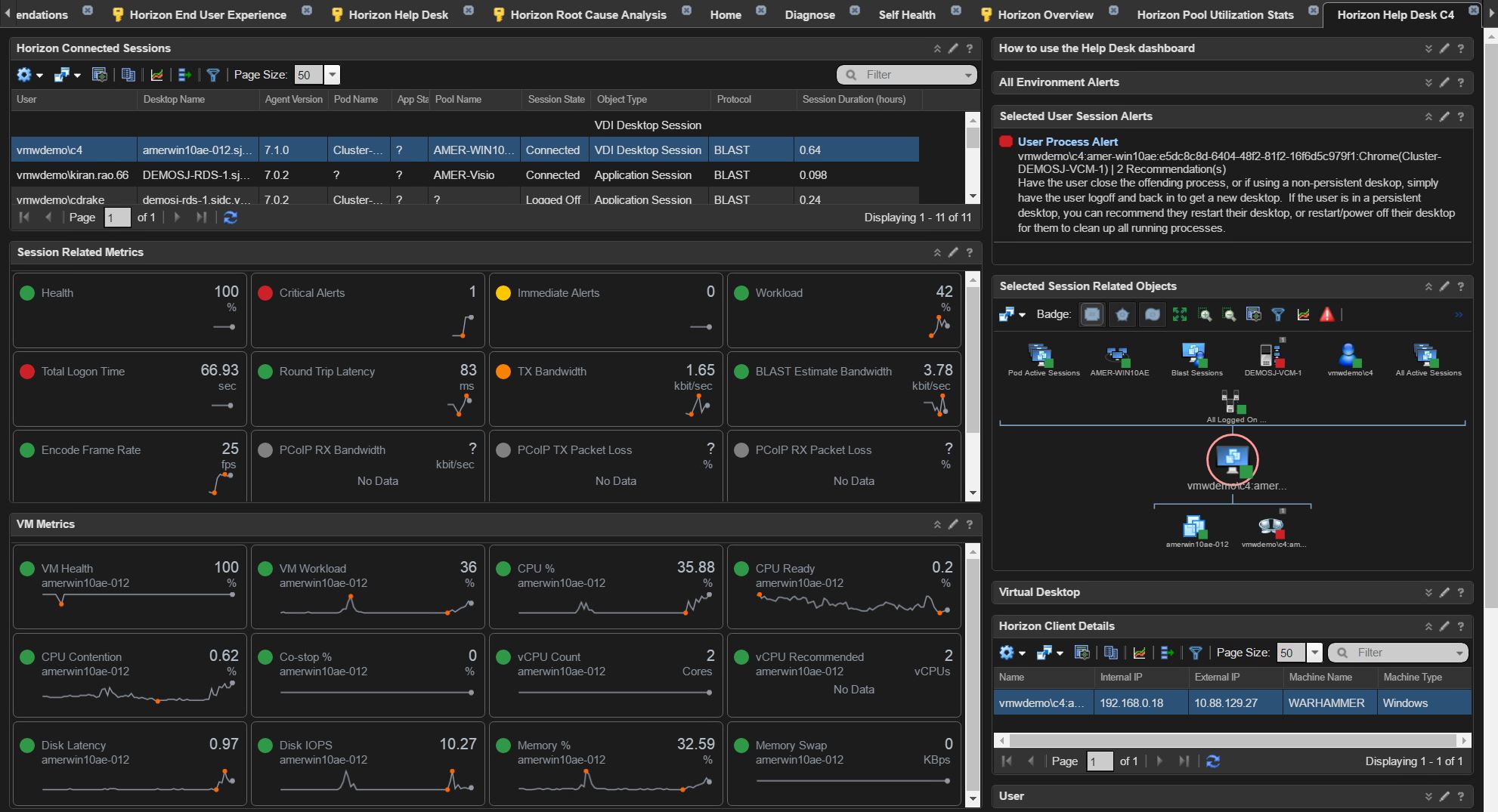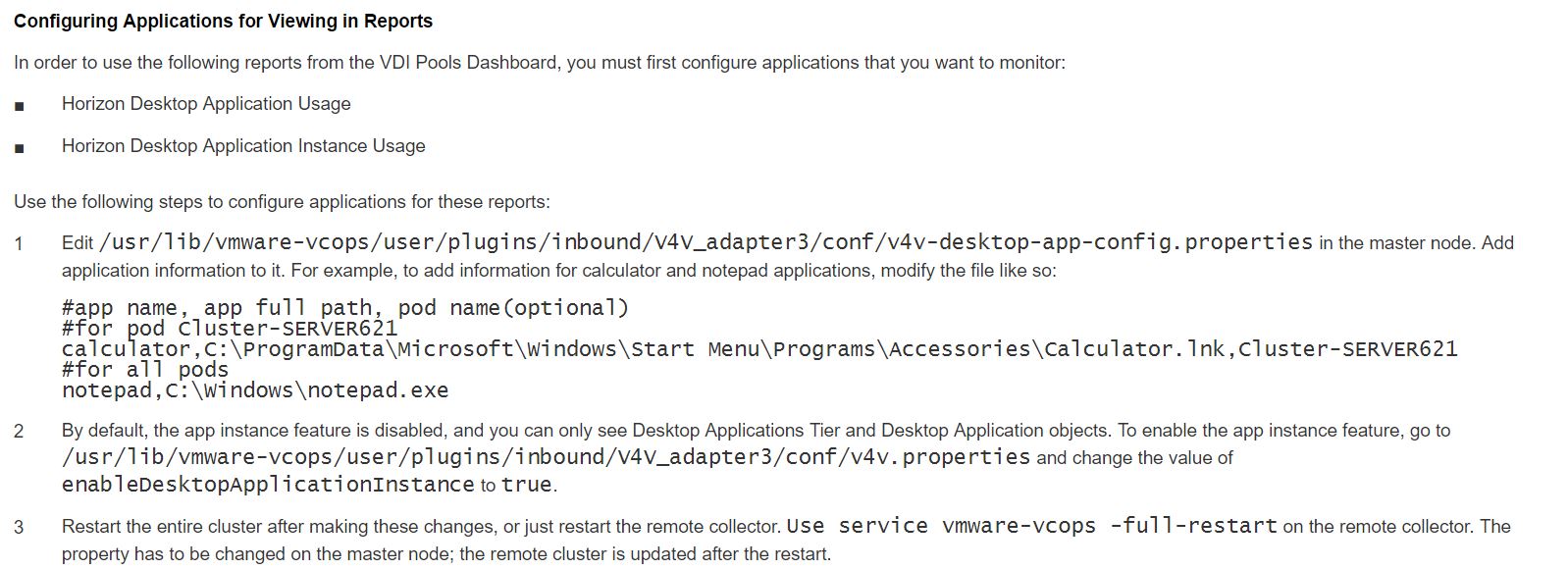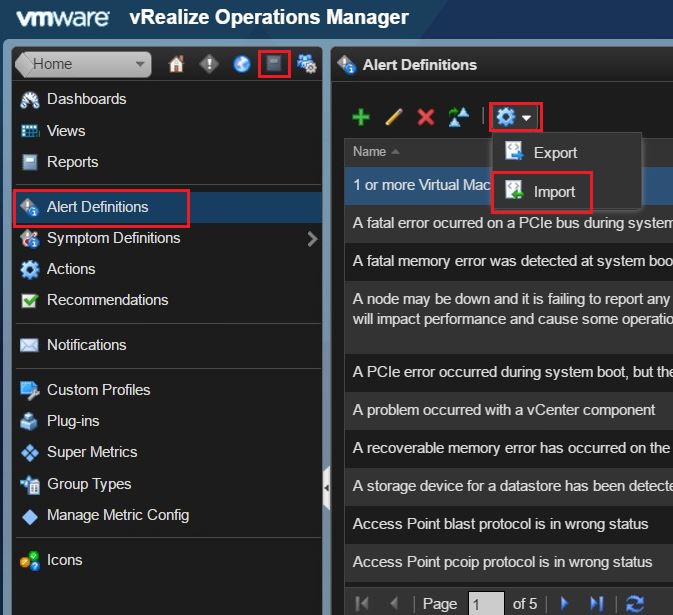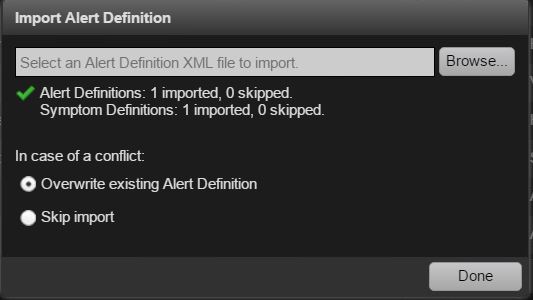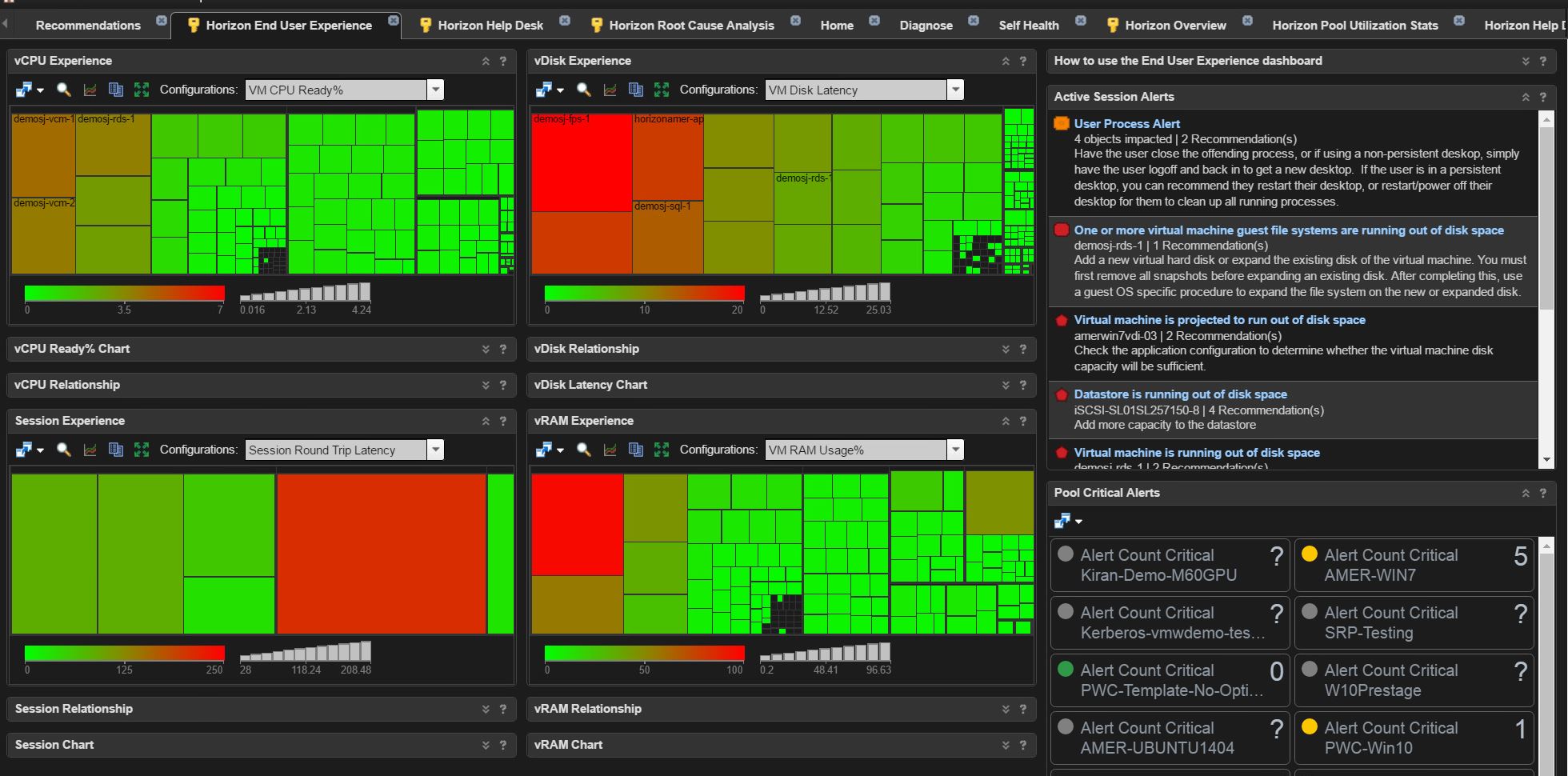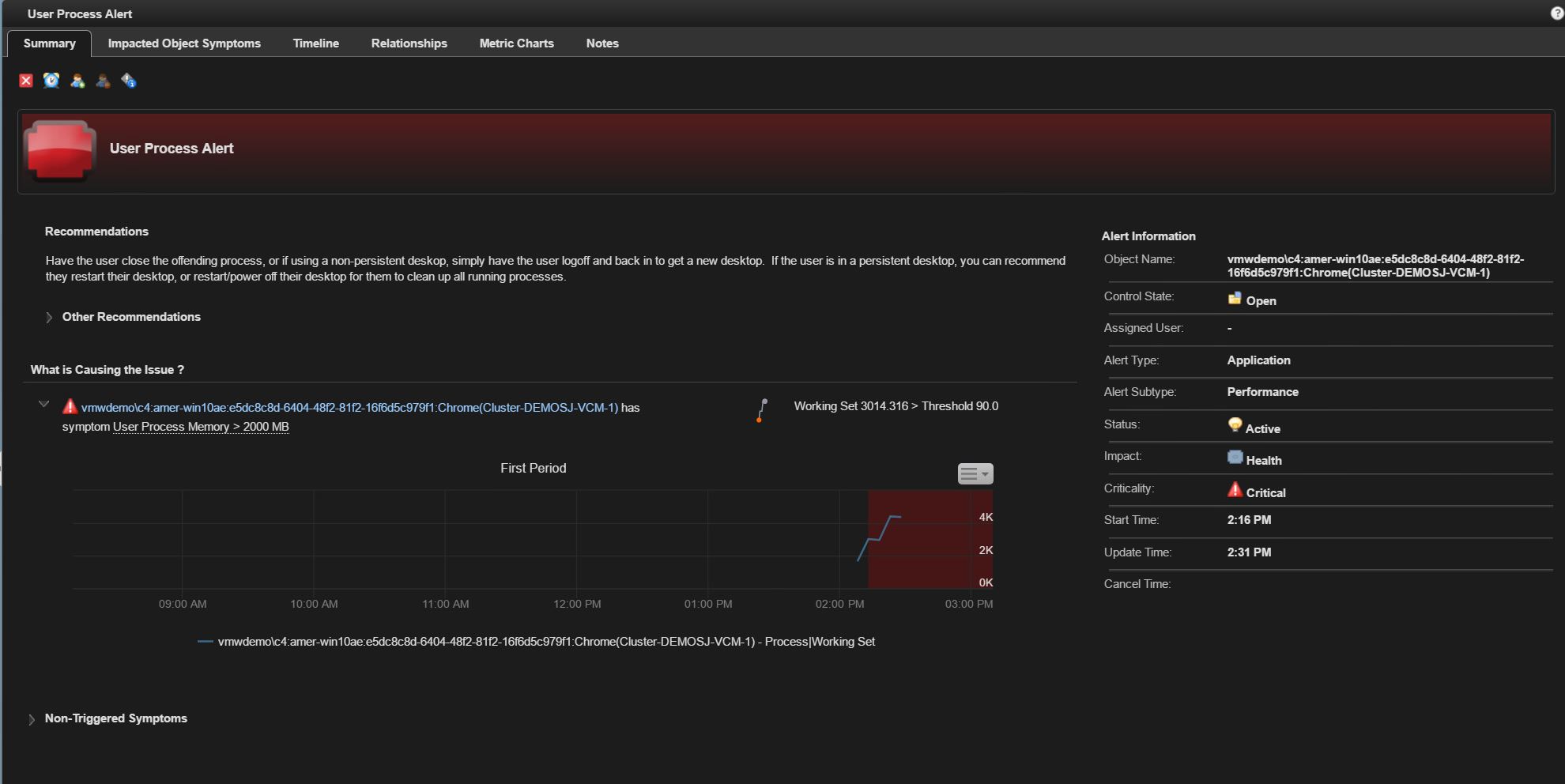MP4H 2.0 What’s New and Use Cases
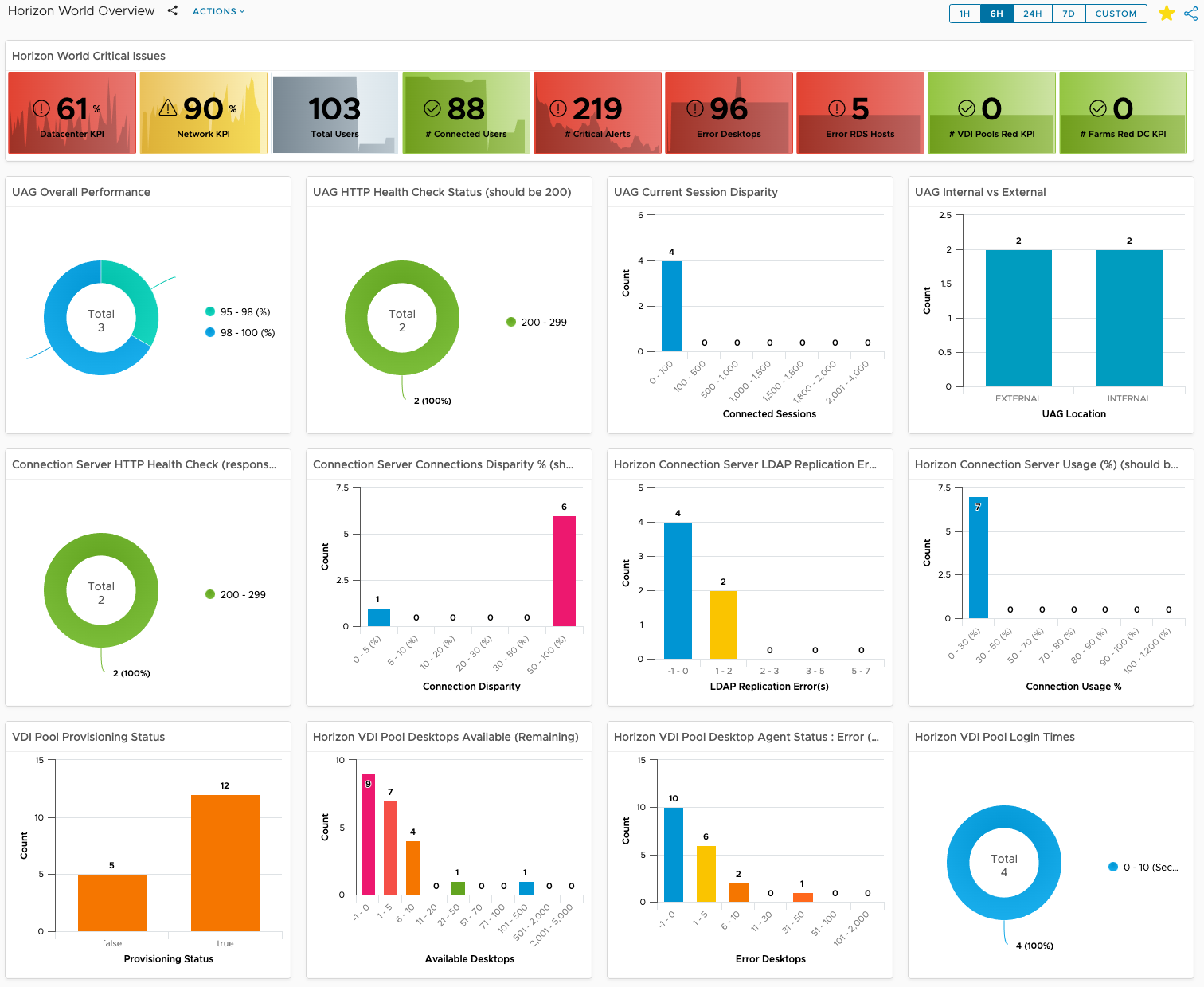
As of 1.27.2022, the Management Pack for Horizon 2.0 is now released and available for on-prem or cloud customer deployments! This is an exciting release as it brings a number of groundbreaking features to further enhance our customer’s ability to successfully monitor, maintain, and optimize their Horizon deployments.
This list of enhancements include:
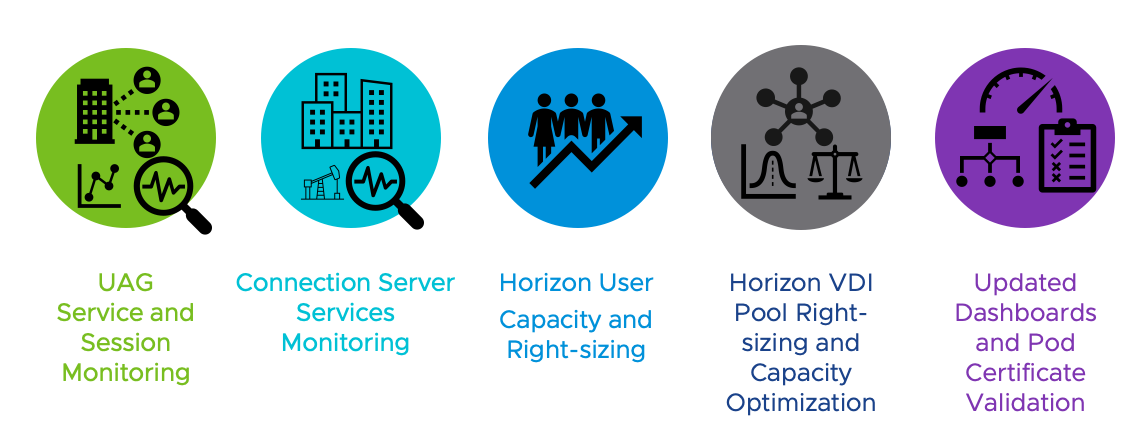
Primary use cases for Unified Access Gateway (UAG) monitoring include:
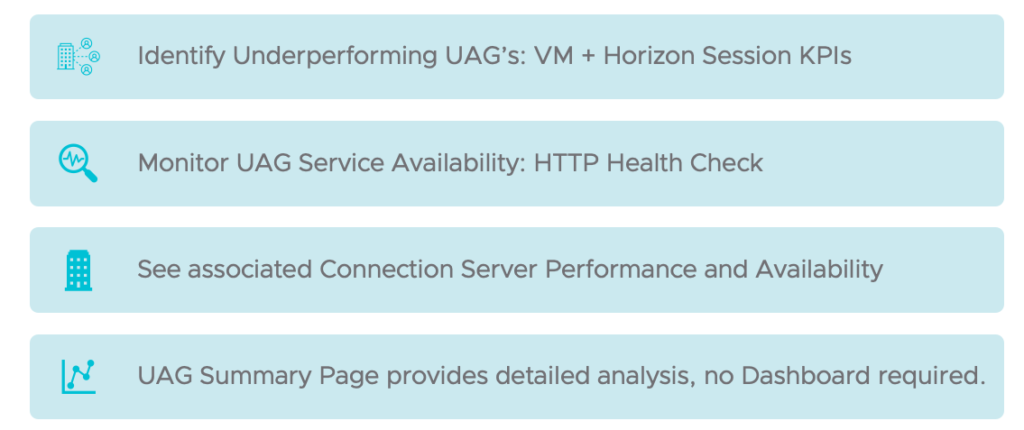
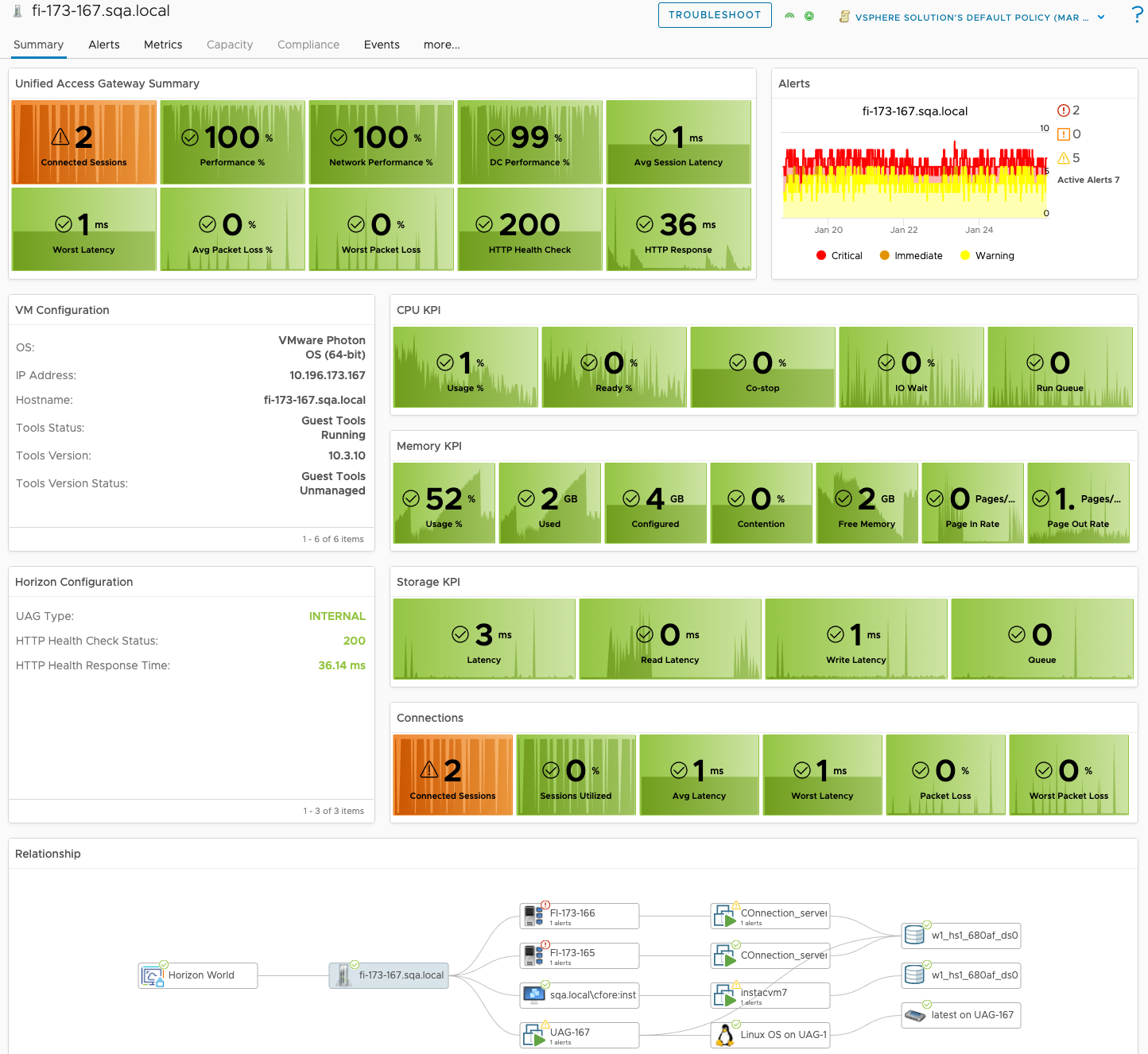
Primary use cases for Horizon Connection Server monitoring include:
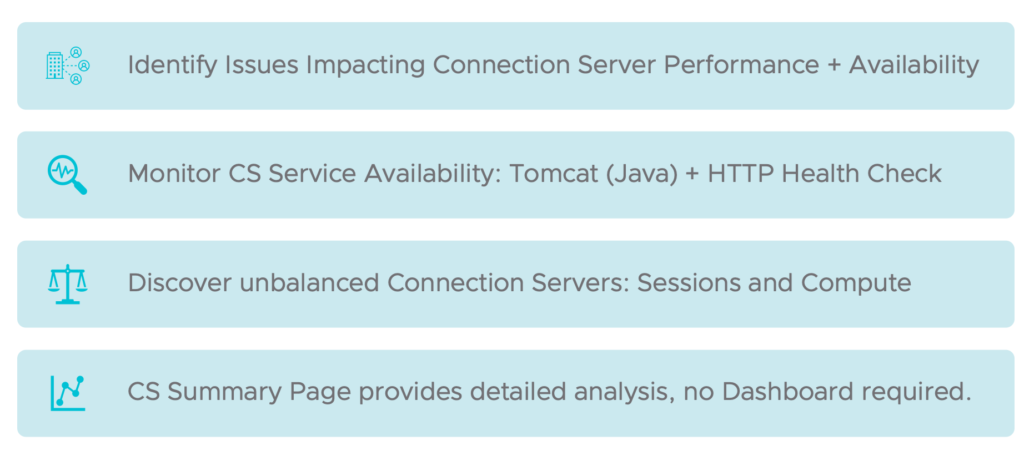
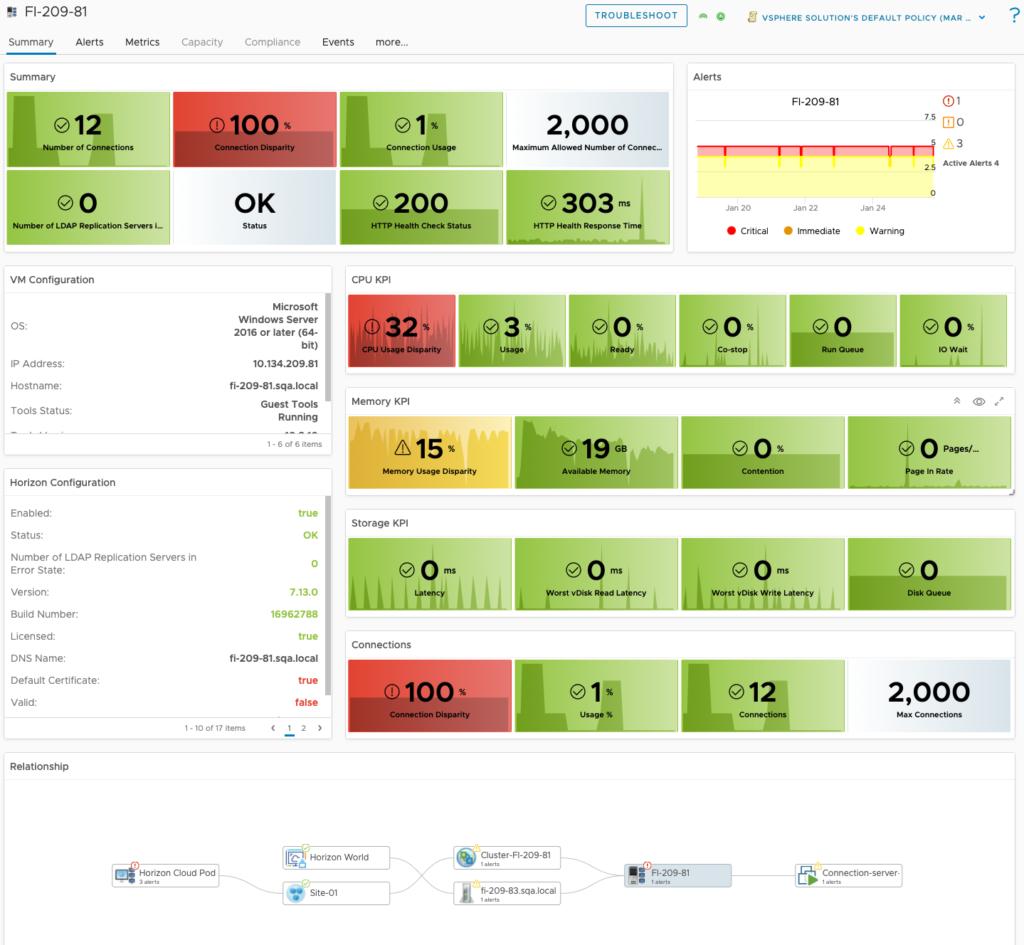
Introducing Horizon User Capacity and Right-sizing metrics:
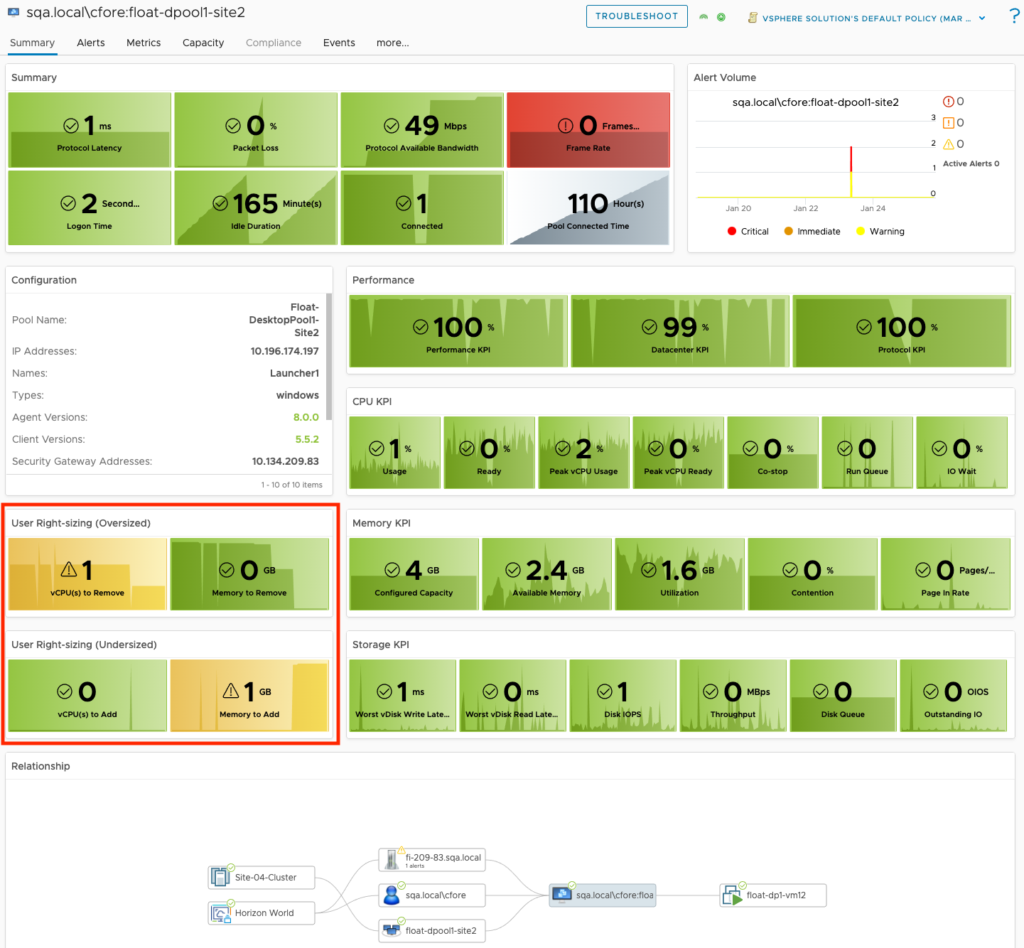
Introducing Horizon VDI Pool Capacity and Configuration optimization metrics:
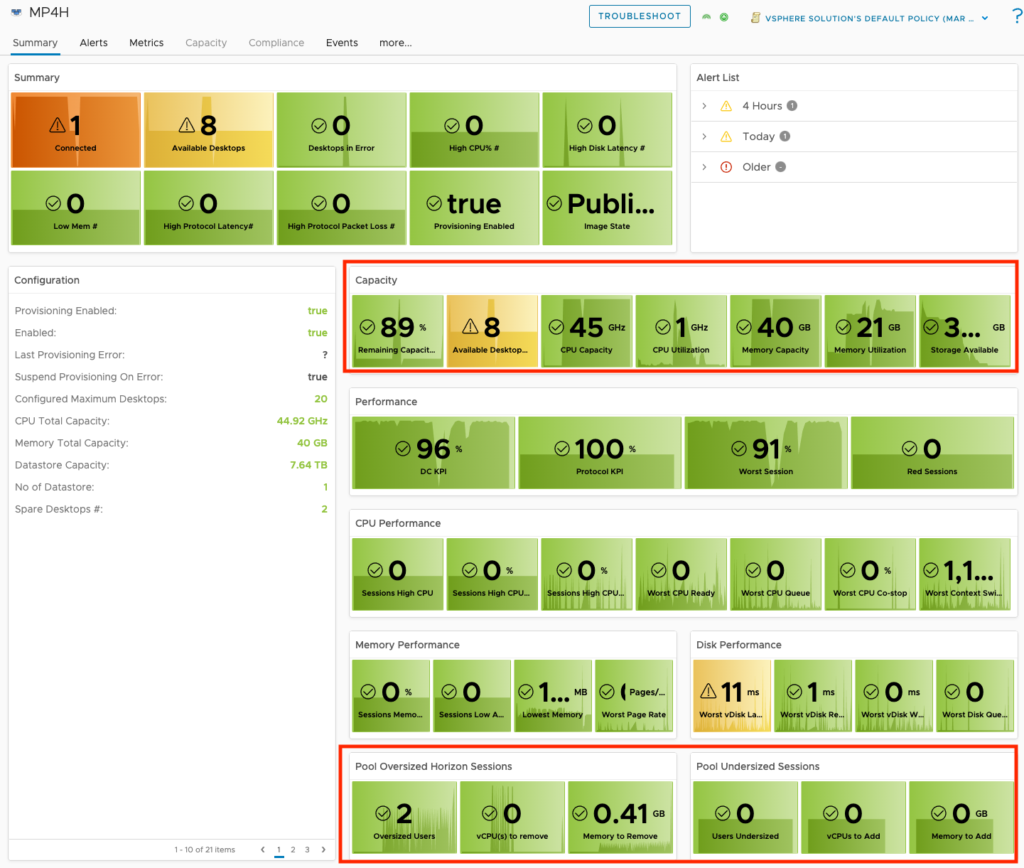
Horizon User Experience/Performance KPI:
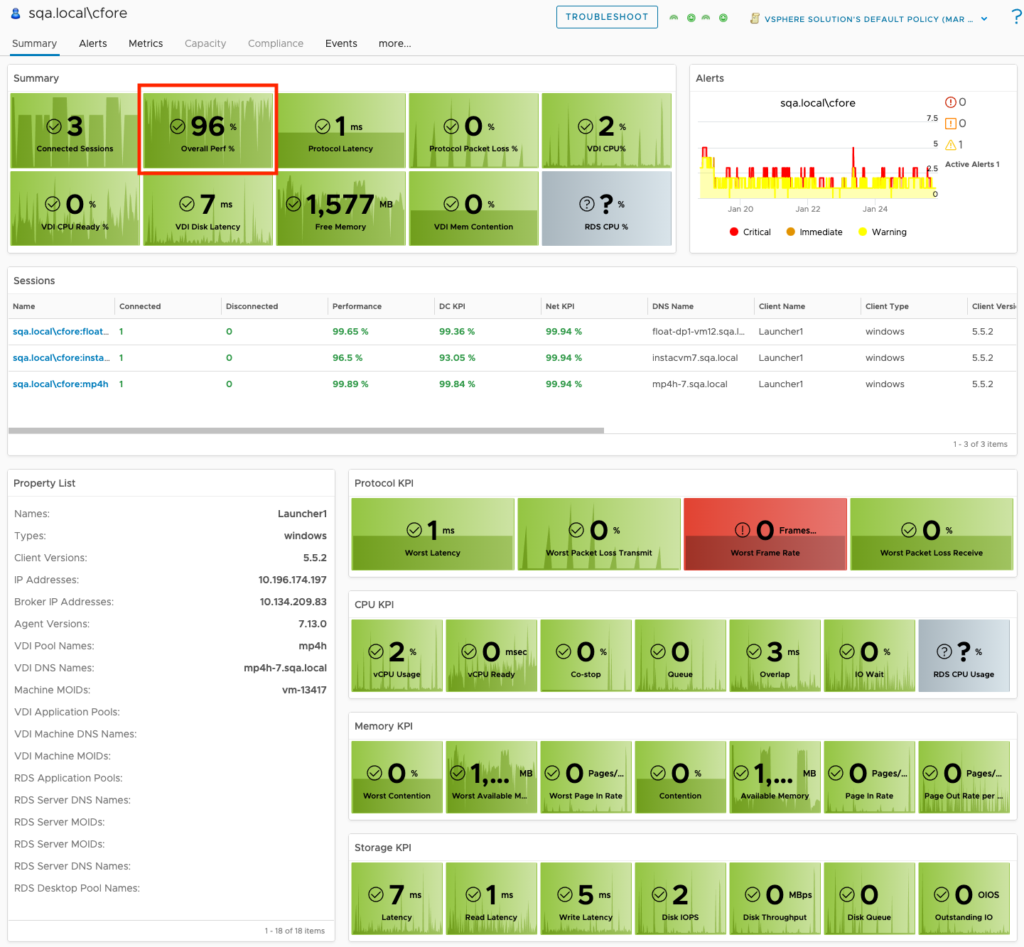
Location analysis using vROPs for Horizon
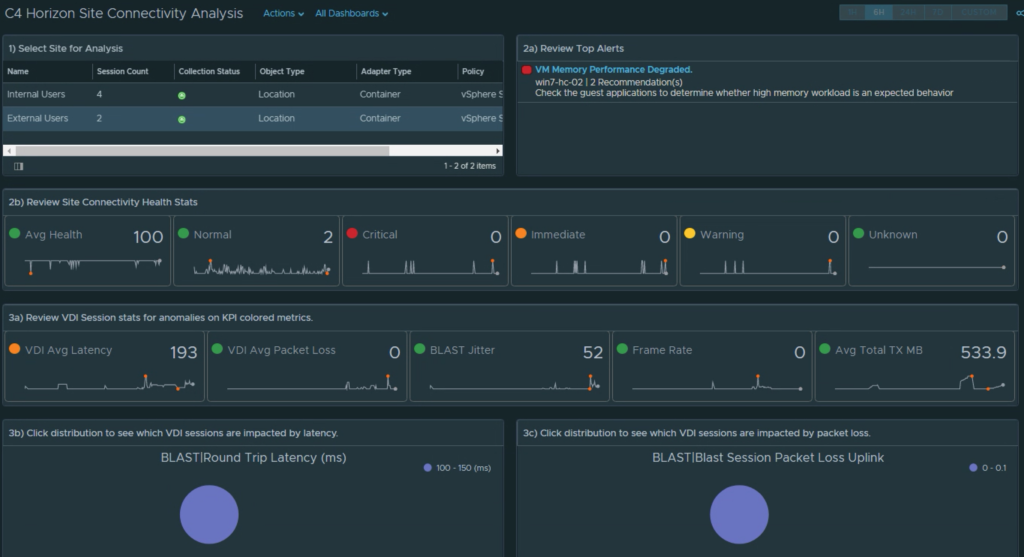
As the number of user sites or locations increases, having good visibility into the overall quality of connectivity of those sites to your Horizon View data center(s) becomes increasingly important. Having worked with many customers on troubleshooting connectivity between such locations, it has become clear that monitoring only at the physical network layer is not sufficient to properly diagnose user connectivity issues impacting the display protocol. In fact, in most cases, it’s the configuration of the physical layer that causes the issue(s), and the device(s) in question do not have the ability to diagnose or detect their impact to the display protocol.
Alas, all hope is not lost! With vROPs for Horizon, we have the ability to monitor the key metrics related to protocol performance and can alert when those metrics have reached critical thresholds. We can also leverage a handy custom grouping feature to organize the remotely connected sessions into defined sites or locations, based on information available in the user’s session data. We can then leverage Super Metrics to calculate the overall health of the group of connected sessions from that site, and then display and alert when the health has dropped below our SLA thresholds.
Sound like something you want to take on? Then read on!
First things first… 1️⃣

We need a strategy to capture and organize how we determine which connections are from which site. The most common approach is to leverage the known internal subnet IP range for that site, and set that as the primary filter for the custom group. However, additional metrics supplied by the user’s session data can be leveraged as well.
In this example, I will create a new Site labeled “External Users”, under the “Location” group, and filter on all users who have an internal subnet IP containing “192.”.
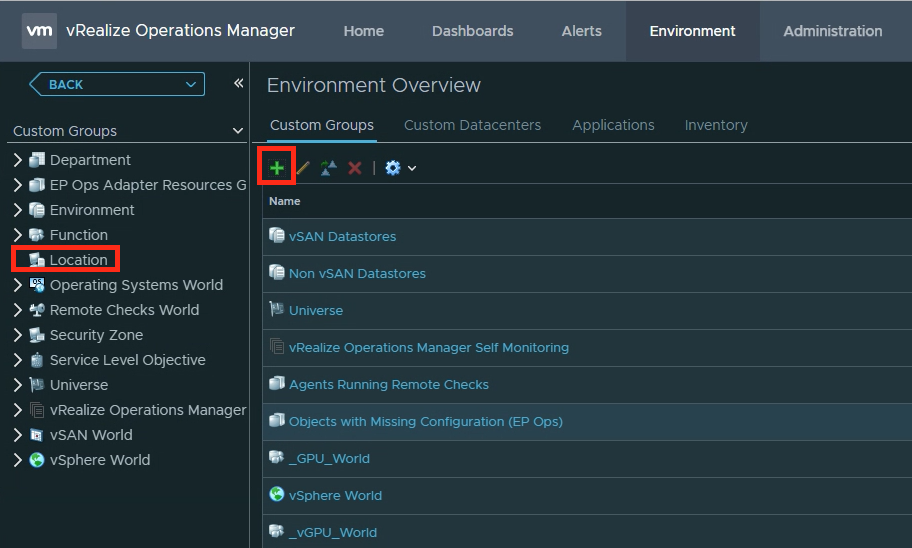
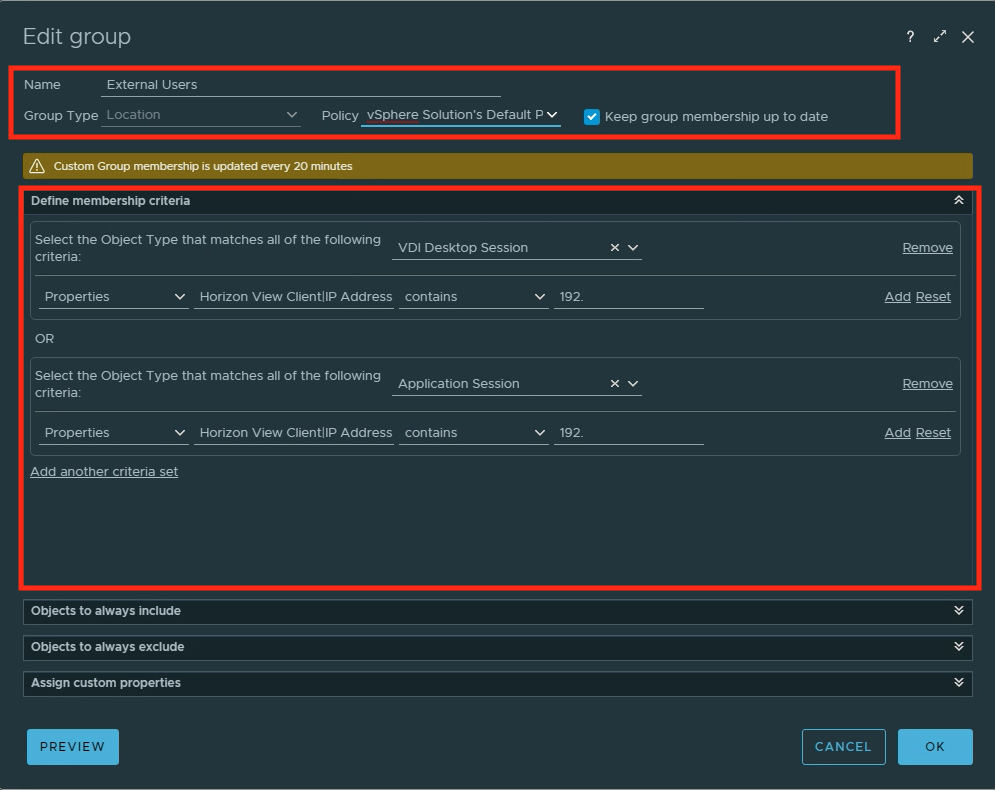
Note: It may take some time before the group starts to populate the sessions, and as noted in the image above, population updates are every 20 minutes.
You will also want to create at least one more additional site for comparison purposes. In the example below, I have created an “Internal Users” site that filters on 10.x networks to separate the session traffic.
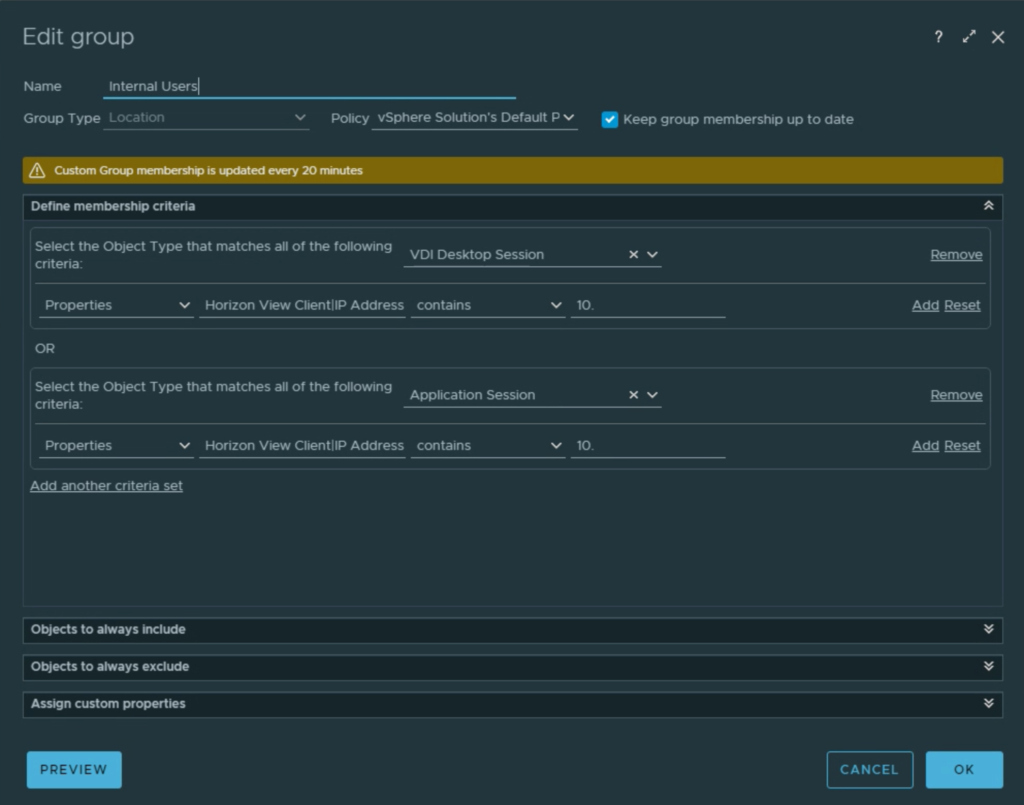
Second is just after first… as long as we’re counting up! 👆

Once your group has started to populate with sessions, it’s time to create meaningful Super Metrics on the group that will give us insight into how well that site is connected.
By default, vROPs 7.5+ will create population TotalCount and Health Criticality Total Count metrics. These will be useful in leveraging out-of-box KPI based alerts that track how well users are connected to the Horizon Environment and let us know the distribution of good to bad connected sessions from that site.
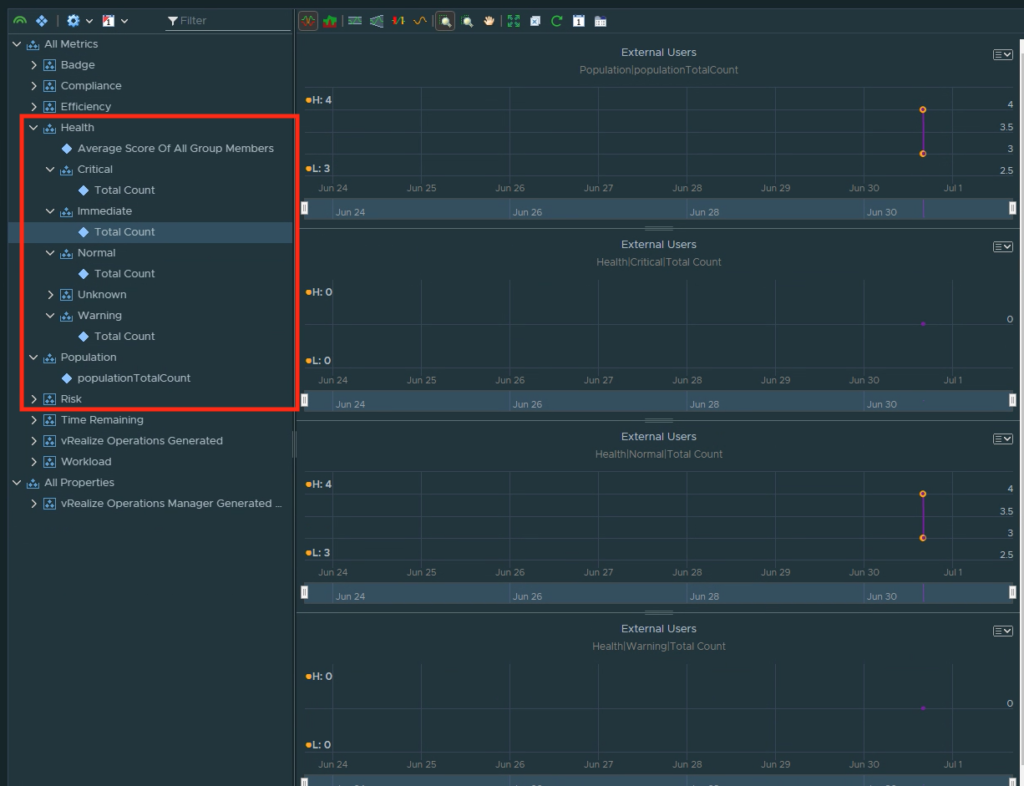
Leveraging Super Metrics, it’s time to create additional site tracking metrics that include, but are not limited to, average site Latency, Packet Loss, Jitter, Frame Rate, and Transmitted Bytes.
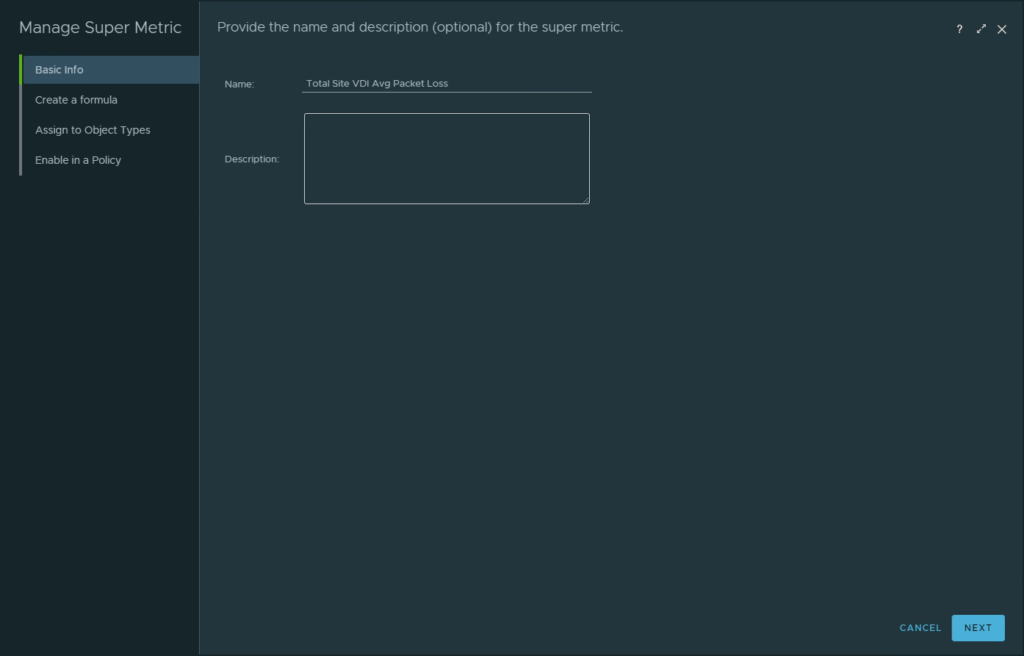
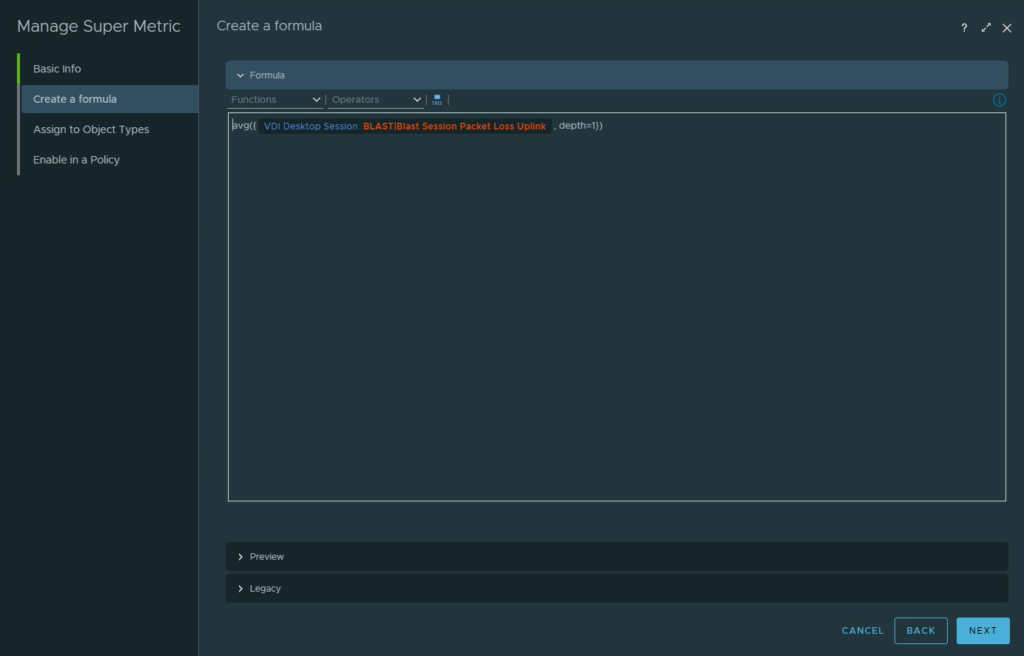
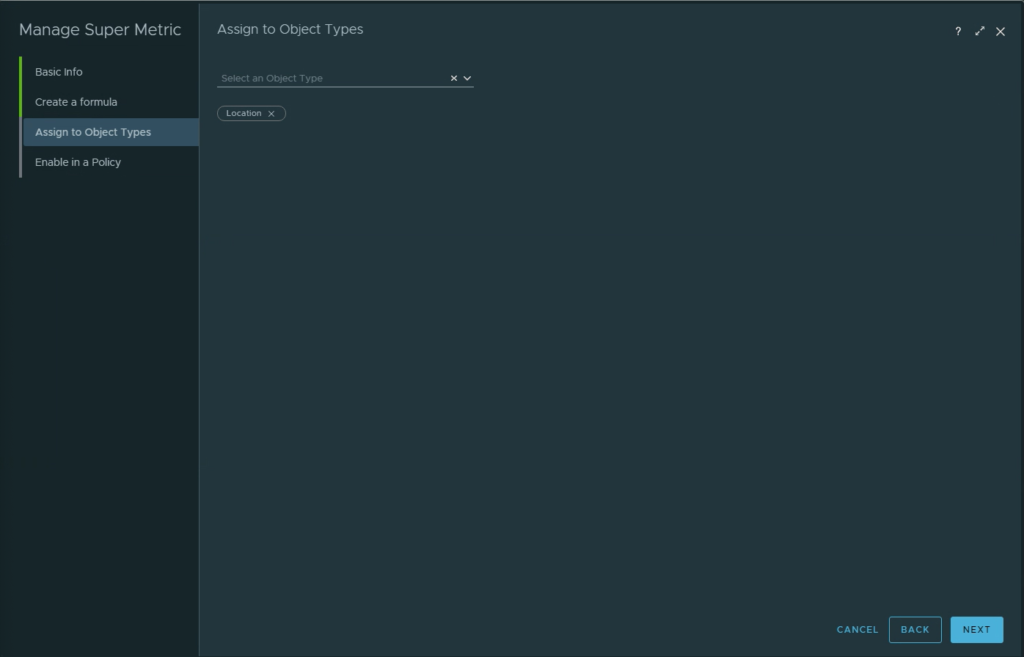
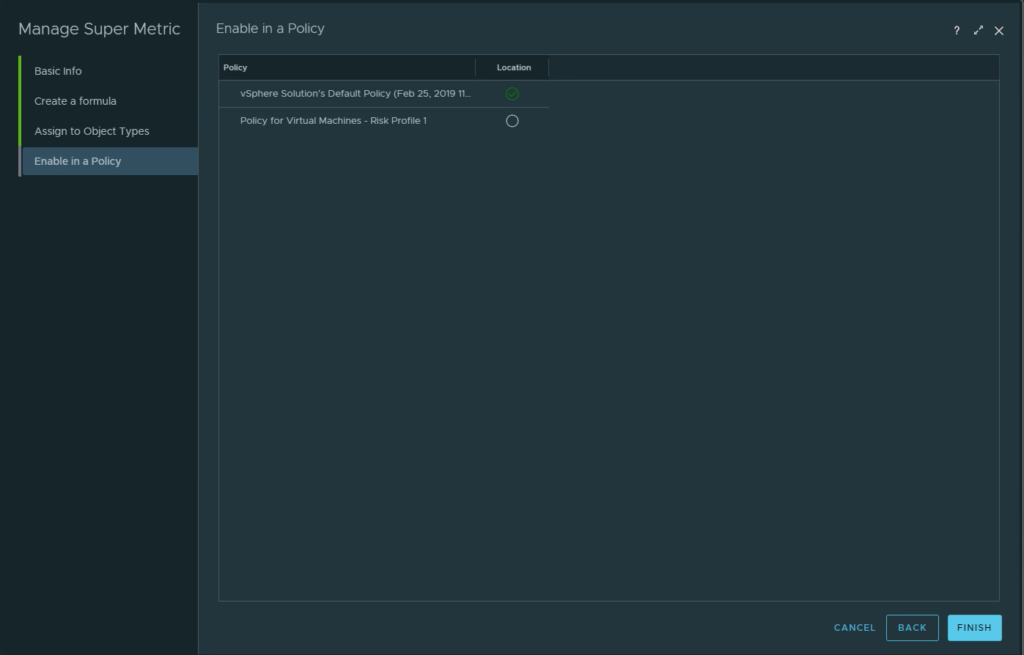


Thirdly Rinse and Repeat… ♻️

Continue to create the Super Metrics for the additional session metrics that you want to collect. As in our example below, you will need to do this for both the VDI and Application Sessions individually to capture the metrics from both types of sessions.
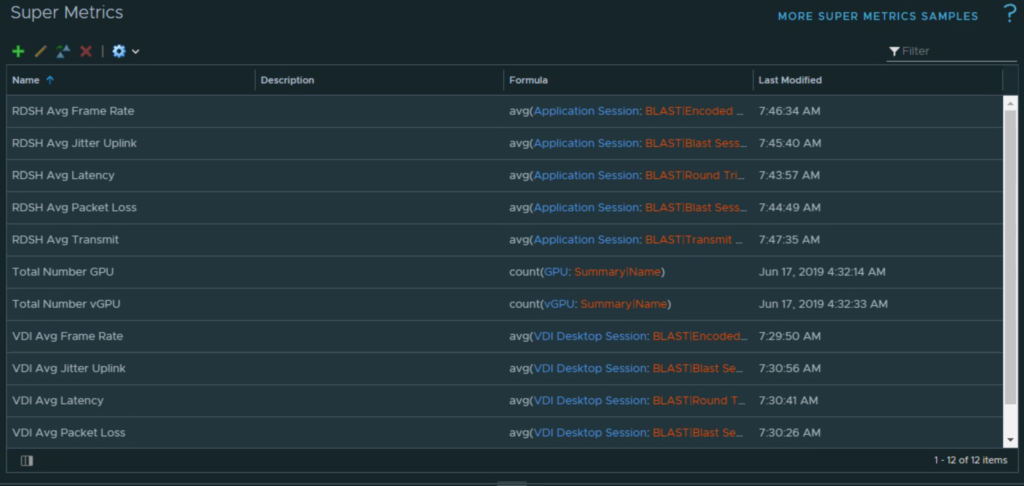
Now… what to do with all this stuff? 🤔

Now that we have meaningful Super Metrics on our custom group, it’s time to display that data in a way that it makes it easier to diagnose specific site connectivity issues, and compare that site against other sites that are connecting to our Horizon environment.
To do so, I’ve created a custom example Dashboard that allows you to select from the list of defined sites, and then display the relevant Alerts and Super Metrics that we defined on those sites. While you can choose to display the data in any manner you see fit, I’ve chosen to use a combination of Scoreboard, Distribution, and Heatmap widgets.
I’ve also chosen to label the widgets using an ordered numbering system with directions so that other users leveraging the dashboard will know how it’s meant to be consumed.


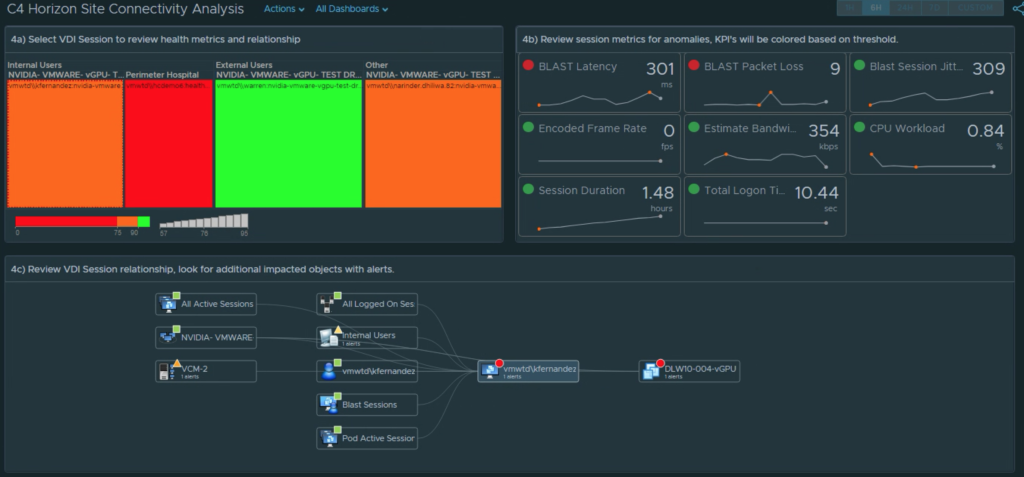

Continue your analysis of the Application Sessions if relevant for your site. The workflow will be the same as the above VDI Session analysis.
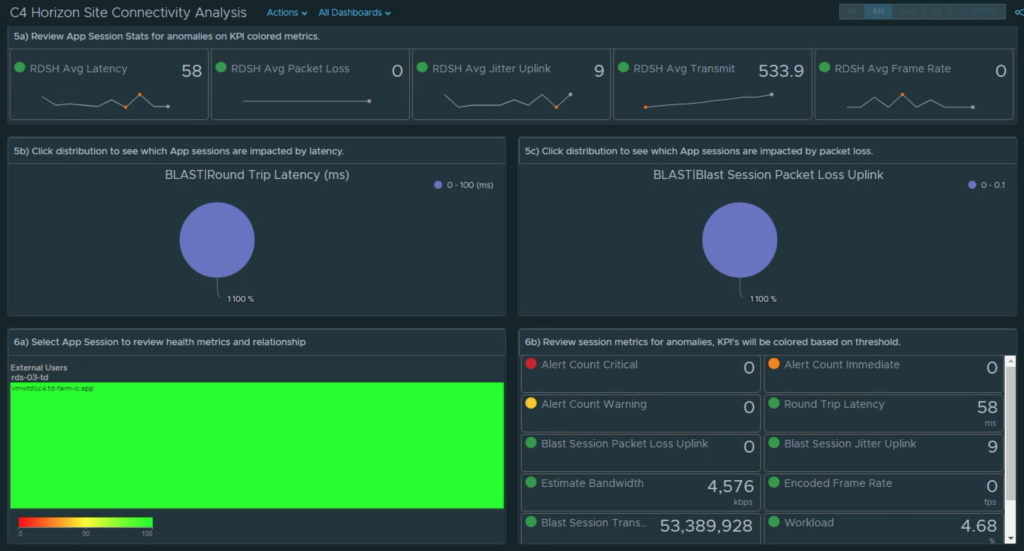

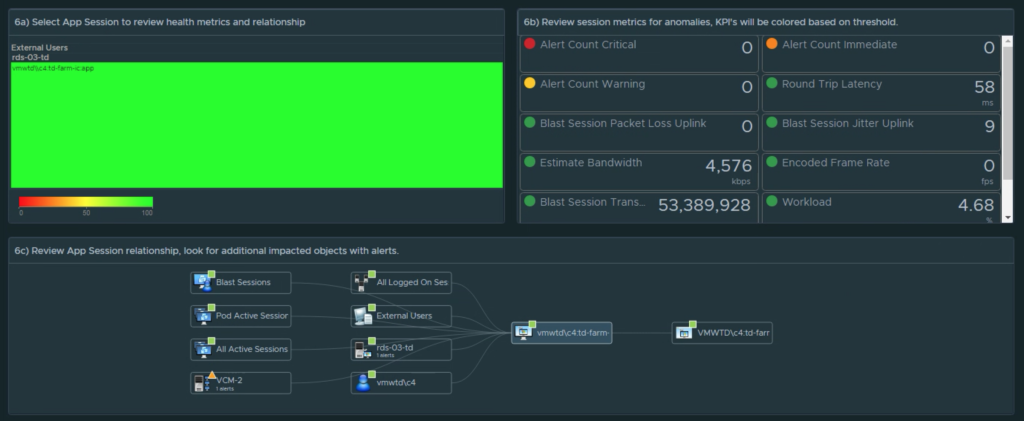
Next steps… Download and enjoy! 🏁

Now that we’ve discussed how to create the content and the high-level strategy for performing the site connectivity analysis, it’s time to download and import the content . The zip file provided in this blog contains all of the content that is required to create the custom dashboard, except for the step on creating the custom group locations. That step will still be required for you to define what “Sites” you want to monitor for connectivity performance.
Contents of the zip include a Dashboard_Horizon Site Location Analysis.zip, Views_Horizon Site Location Analysis.zip, and Supermetric_Horizon Site Analysis.json. All of which need to be imported and at least one Location group defined before the Dashboard will function properly.
Enjoy! Please provide thoughts or feedback on how to make the dashboard and content better.
How to add Historic User Session Latency to vROPs for Horizon.
VROPs for Horizon provides end-to-end visibility into key User session statistics that make it easy for Horizon admins to visualize and alert on performance problems impacting the user’s of their environment. One of the key metrics used in determining how well user’s are connected to their virtual app or desktop session is Session Latency (ms), as it most visually impacts the user’s perspective of their session performance. The lower the session latency, the quicker video, keyboard, and mouse inputs are redirected to and from a user’s endpoint client, giving the user a more native-like PC experience.
As the latency trends higher (>180ms), the experience begins to degrade, and the user can begin to notice “sluggishness“ – slow keyboard, mouse, and video responsiveness.
VROPs for Horizon gives us direct visibility into when these issues are occurring across all of the Active User Sessions of the Horizon View environment. However, once the session becomes inactive, it will go into a stale object state and be removed from vROPs during a clean-up window.
To be able to view this information historically on Pools and User objects, you can create Super Metrics that simply maps the session latency to the objects you want to report on.
Creating the Super Metric
To create the Super Metric, Navigate to Administration -> Configuration -> Super Metrics. Click the green + sign to create a new Super Metric.
Provide the Super Metric a unique name, in this case we are using “Avg App Session Latency”. Search for the “Application Session” Object Type, and click “Round Trip Latency (ms)” to add it to the Super Metric. Since, we are looking for the average latency, select “avg” from the available functions list, making sure that the average function applies to the metric by encapsulating it parenthesis as demonstrated in the image below. Click Save to finish the Super Metric.
Next, you will need to add the Super Metric to the “User” object type. Click the green + sign under the “Object Types” section. Search and select the “User” object type.
Before the Super Metric will begin collecting data, you will need to navigate to Administration-> Policies, and edit the active monitoring policy to enable the metric for collection.
Once the metric has started to collect data, you can view the data on a individual “User” object by selecting “All Metrics” -> Super Metric -> select metric.
You can also create custom Views that display the historical latency for all users of the environment, as well as perform simple roll-up statistics.
vROPs for Horizon – User Application Threshold Alerts
In the latest vROPs for Horizon 6.4, the ability to track user launched desktop applications was added. (See 6.4 release notes) This new addition gives customers the capability of providing reports of which users have launched specific windows applications over time.
A lesser known capability, is that this new feature also gives customers the ability to alert on these same processes when they have reached a certain CPU and Memory threshold. To take advantage of this feature, the vROPs administrator needs to perform the following steps:
- Add the specific processes that you want to monitor to your vROPs for Horizon configuration. (Process Outline Click Here).
- Create a new alert, and the define the appropriate CPU and Memory symptom thresholds that you want to track.
A sample alert can be downloaded using the following link: User Process Alert.xml
To import my sample Alert and customize it for your environment, follow these steps:
- Navigate to Content-> Alert Definitions, and click Import.
- Click Browse and select the User Process Alert.xml file previously downloaded, and click Open to import.
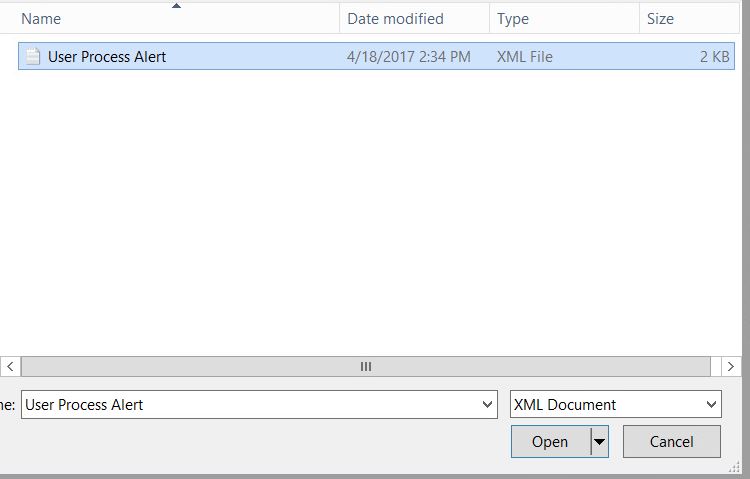
- Confirm that the Alert Definition was imported successfully. If the alert was skipped for some reason, you can re-attempt the process and select the “Overwrite existing Alert Definition” option before clicking Browse and opening the file.
- Click Done to finish the import process.
Congratulations! You now have visibility into in-guest processes, and how they are impacting the users of your Horizon View environment.
Getting More out of VMware vRealize Operations for Horizon – training video
Getting More out of VMware vRealize Operations for Horizon training video:
In this training video you will learn how to quickly operationalize the vROPs for Horizon solution, and how it provides end-to-end visibility into issues plaguing your Horizon View users. Learn how to use the latest Help Desk dashboard to get instant insight into “Why their desktop is slow”.
